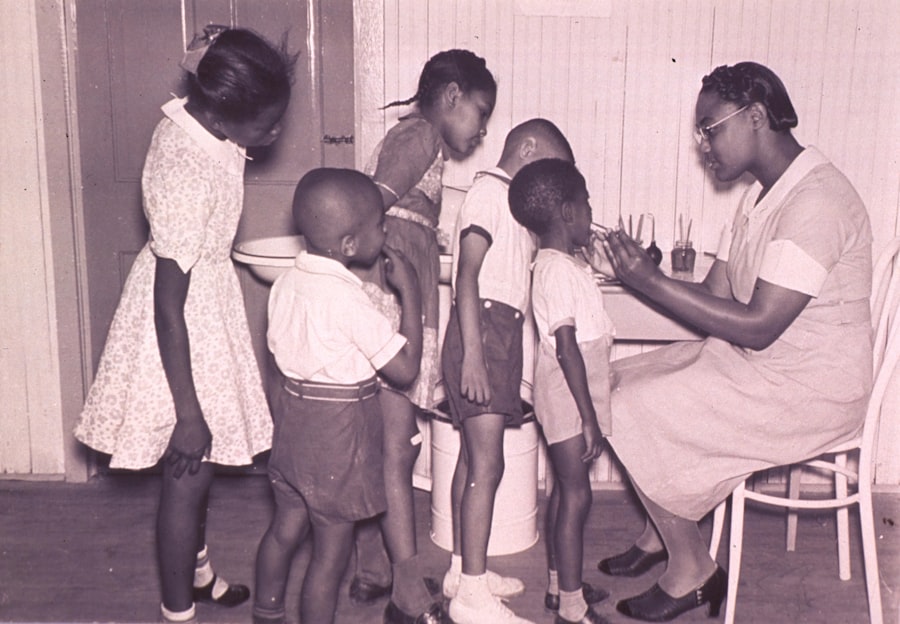How to Help a Child with ADHD: Tips for Parents

Attention-deficit/hyperactivity disorder (ADHD) is a neurodevelopmental disorder that affects millions of children worldwide. It is characterized by symptoms such as inattention, hyperactivity, and impulsivity, which can significantly impact a child’s daily life and development. ADHD not only affects the child but also has a profound impact on their family. Understanding and addressing ADHD is crucial for the well-being and success of both the child and their family.
Key Takeaways
- ADHD is a neurodevelopmental disorder that affects a child’s ability to focus, control impulses, and regulate behavior.
- Signs and symptoms of ADHD include hyperactivity, inattention, impulsivity, forgetfulness, and difficulty following instructions.
- Seeking professional help is crucial for an accurate diagnosis and effective treatment options, which may include therapy, medication, or a combination of both.
- Creating a supportive environment for your child with ADHD involves setting clear expectations, providing structure and routine, and offering positive reinforcement.
- Effective communication with your child’s teachers and caregivers can help ensure consistency and support for your child’s needs.
Understanding ADHD: What is it and How Does it Affect Your Child?
ADHD is a complex disorder that has both genetic and environmental factors contributing to its development. It is believed to be caused by an imbalance of neurotransmitters in the brain, specifically dopamine and norepinephrine. There are three types of ADHD: predominantly inattentive type, predominantly hyperactive-impulsive type, and combined type. Each type has its own set of symptoms, but all types share the core symptoms of inattention, hyperactivity, and impulsivity.
ADHD can have a significant impact on a child’s daily life and development. Children with ADHD often struggle with tasks that require sustained attention, organization, and impulse control. They may have difficulty following instructions, completing homework, or staying focused in school. These challenges can lead to academic difficulties, social struggles, and low self-esteem. It is important for parents to understand how ADHD affects their child so they can provide the necessary support and interventions.
Recognizing the Signs and Symptoms of ADHD in Your Child
Recognizing the signs and symptoms of ADHD in your child is crucial for early detection and intervention. Common signs of ADHD include difficulty paying attention, being easily distracted, forgetfulness, impulsivity, hyperactivity, and difficulty staying still or sitting quietly. It is important to note that these symptoms can also be present in other conditions or behaviors, so it is essential to differentiate ADHD from other possible causes.
Early detection and intervention are key in managing ADHD. If you suspect that your child may have ADHD, it is important to consult with a healthcare professional who specializes in ADHD. They will conduct a comprehensive evaluation, which may include interviews, questionnaires, and observations, to determine if your child meets the criteria for ADHD. Early intervention can help improve outcomes and provide the necessary support for your child’s success.
Seeking Professional Help: Diagnosis and Treatment Options for ADHD
Seeking professional help for ADHD is crucial in order to receive an accurate diagnosis and access appropriate treatment options. A healthcare professional, such as a pediatrician or child psychiatrist, will conduct a thorough evaluation to determine if your child has ADHD. This evaluation may involve gathering information from parents, teachers, and other caregivers, as well as using standardized assessment tools.
Once a diagnosis is made, there are various treatment options available for ADHD. The most common treatment approach includes a combination of medication and therapy. Medication, such as stimulants or non-stimulants, can help manage the core symptoms of ADHD by improving attention, reducing impulsivity, and decreasing hyperactivity. Therapy, such as behavioral therapy or cognitive-behavioral therapy, can help children develop coping strategies and improve their executive functioning skills.
Creating a Supportive Environment for Your Child with ADHD
Creating a supportive and structured environment is essential for children with ADHD. Children with ADHD thrive in environments that provide clear expectations, routines, and systems. Establishing consistent routines can help children with ADHD manage their time and tasks more effectively. Breaking tasks into smaller, manageable steps can also help them stay focused and complete tasks successfully.
It is important to create a positive and accepting home environment for your child with ADHD. This includes providing praise and encouragement for their efforts and accomplishments, rather than focusing solely on their challenges or mistakes. It is also important to set realistic expectations and provide appropriate consequences for their behavior. Creating a supportive environment can help children with ADHD feel understood, accepted, and empowered to succeed.
Developing Effective Communication Strategies with Your Child’s Teachers and Caregivers

Open communication with your child’s teachers and caregivers is crucial in ensuring that they receive the necessary support and accommodations at school and other settings. It is important to establish a collaborative relationship with teachers and caregivers, as they play a vital role in your child’s success. Regular communication can help keep everyone informed about your child’s progress, challenges, and any changes in their treatment plan.
Effective communication strategies include being proactive in sharing information about your child’s ADHD, attending parent-teacher conferences, and participating in Individualized Education Program (IEP) or 504 Plan meetings. It is important to advocate for your child’s needs and work together with teachers and caregivers to develop strategies and accommodations that will support their learning and development.
Implementing Behavioral Interventions and Strategies for Managing ADHD Symptoms
Behavioral interventions and strategies are an important component of managing ADHD symptoms. These interventions focus on teaching children with ADHD skills to improve their executive functioning, self-regulation, and social skills. Examples of effective behavioral interventions include implementing a token economy system, using visual schedules or checklists, providing immediate feedback and rewards for positive behavior, and teaching problem-solving skills.
Consistency and follow-through are key in implementing these interventions and strategies. It is important to establish clear expectations, provide reminders and prompts when needed, and reinforce positive behavior consistently. By implementing these interventions and strategies consistently, children with ADHD can develop the necessary skills to manage their symptoms more effectively.
Promoting Healthy Lifestyle Habits to Improve ADHD Symptoms
Promoting healthy lifestyle habits can have a positive impact on ADHD symptoms. A healthy diet that includes whole foods, lean proteins, fruits, vegetables, and complex carbohydrates can provide the necessary nutrients for optimal brain function. Regular exercise, such as aerobic activities or sports, can help reduce hyperactivity and improve focus. Sufficient sleep is also important for children with ADHD, as lack of sleep can exacerbate symptoms.
Incorporating mindfulness and relaxation techniques into your child’s routine can also help manage ADHD symptoms. Mindfulness exercises, such as deep breathing or guided imagery, can help children with ADHD calm their minds and improve their ability to focus. Relaxation techniques, such as progressive muscle relaxation or yoga, can help reduce stress and promote a sense of calm.
Exploring Medication Options for ADHD Treatment
Medication can be an effective treatment option for children with ADHD, especially when combined with other interventions. There are various medication options available for ADHD, including stimulants (such as methylphenidate or amphetamines) and non-stimulants (such as atomoxetine or guanfacine). These medications work by increasing the levels of neurotransmitters in the brain, which helps improve attention, reduce impulsivity, and decrease hyperactivity.
When considering medication for your child with ADHD, it is important to make an informed decision. Discuss the benefits and risks of medication with your healthcare professional, and weigh them against the potential benefits for your child. It is also important to closely monitor your child’s response to medication and communicate any concerns or side effects with your healthcare professional.
Addressing Co-Occurring Conditions and Challenges Associated with ADHD
ADHD often co-occurs with other conditions or challenges that can further impact a child’s daily life and development. Common co-occurring conditions include learning disabilities, anxiety disorders, mood disorders (such as depression or bipolar disorder), and oppositional defiant disorder (ODD). It is important to address these co-occurring conditions and challenges in order to provide comprehensive and individualized treatment for your child.
Strategies for addressing co-occurring conditions and challenges may include additional therapy or interventions specific to the co-occurring condition, medication adjustments, or modifications to the treatment plan. It is important to work closely with your healthcare professional to develop a comprehensive and individualized approach that addresses all of your child’s needs.
Coping Strategies for Parents of Children with ADHD: Taking Care of Yourself and Your Family
Caring for a child with ADHD can be challenging and overwhelming at times. It is important for parents to prioritize self-care in order to effectively support their child and maintain their own well-being. Strategies for managing stress and maintaining a healthy work-life balance include setting realistic expectations, practicing self-compassion, seeking support from family and friends, and utilizing available resources.
Building a support network and finding resources for families affected by ADHD can also be beneficial. Support groups, both in-person and online, can provide a sense of community and understanding. Educational resources, such as books or websites, can provide valuable information and strategies for managing ADHD. It is important to remember that you are not alone in this journey and that there are resources available to help you and your family.
ADHD is a complex disorder that can have a significant impact on children and their families. Understanding and addressing ADHD is crucial for the well-being and success of both the child and their family. By recognizing the signs and symptoms of ADHD, seeking professional help, creating a supportive environment, implementing behavioral interventions, promoting healthy lifestyle habits, exploring medication options, addressing co-occurring conditions, and practicing self-care, parents can effectively support their child with ADHD and help them thrive. It is important to seek help and support for ADHD in order to provide the necessary interventions and accommodations for your child’s success.
If you’re looking for more resources on parenting and supporting children with ADHD, you might find this article from How to Start Digital helpful. Titled “Understanding ADHD: A Comprehensive Guide for Parents,” it provides a detailed overview of ADHD, its symptoms, and various strategies parents can employ to help their child thrive. From creating structured routines to exploring different treatment options, this article offers valuable insights and practical tips. Check it out here.
FAQs
What is ADHD?
ADHD stands for Attention Deficit Hyperactivity Disorder. It is a neurodevelopmental disorder that affects a person’s ability to focus, pay attention, and control impulsive behaviors.
What are the symptoms of ADHD?
The symptoms of ADHD include inattention, hyperactivity, and impulsivity. Children with ADHD may have difficulty following instructions, completing tasks, and staying organized. They may also be easily distracted, fidgety, and talkative.
How can parents help a child with ADHD?
Parents can help a child with ADHD by creating a structured routine, setting clear expectations, and providing positive reinforcement. They can also work with their child’s healthcare provider to develop a treatment plan that may include medication, therapy, or both.
What are some tips for managing ADHD at home?
Some tips for managing ADHD at home include creating a quiet and organized study space, breaking tasks into smaller steps, and using visual aids to help with organization. Parents can also encourage physical activity and limit screen time.
What are some common misconceptions about ADHD?
Some common misconceptions about ADHD include that it is caused by poor parenting or a lack of discipline, that it only affects children, and that medication is the only treatment option. In reality, ADHD is a complex disorder with a variety of causes and treatment options.





